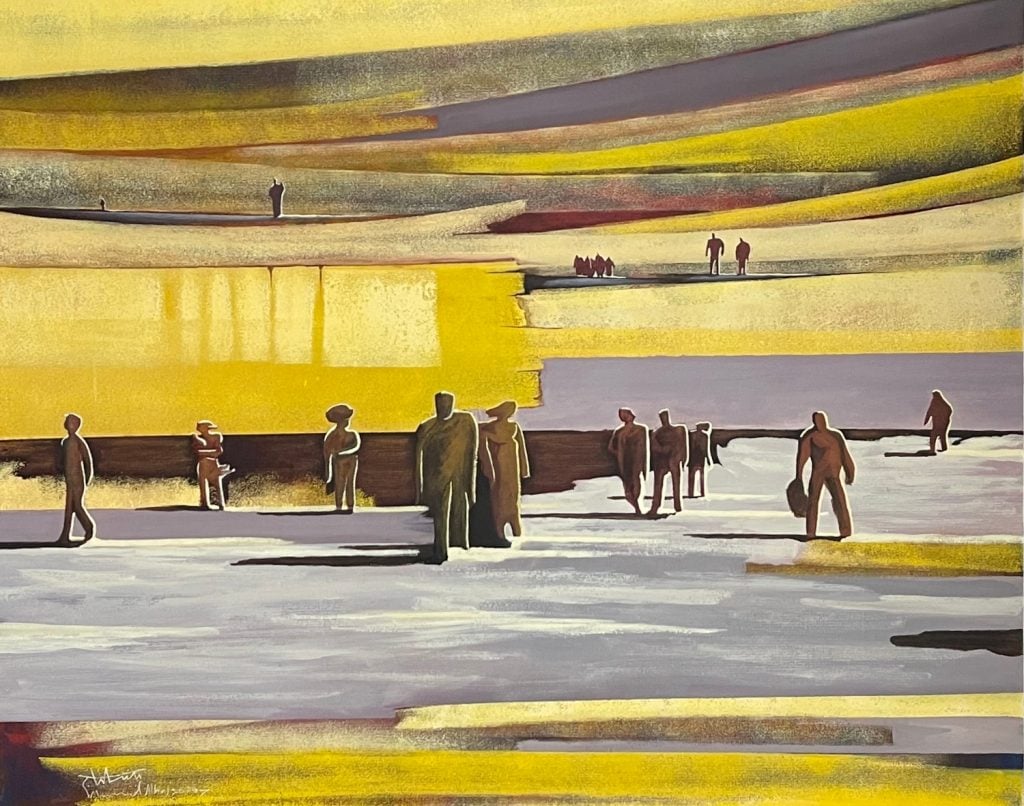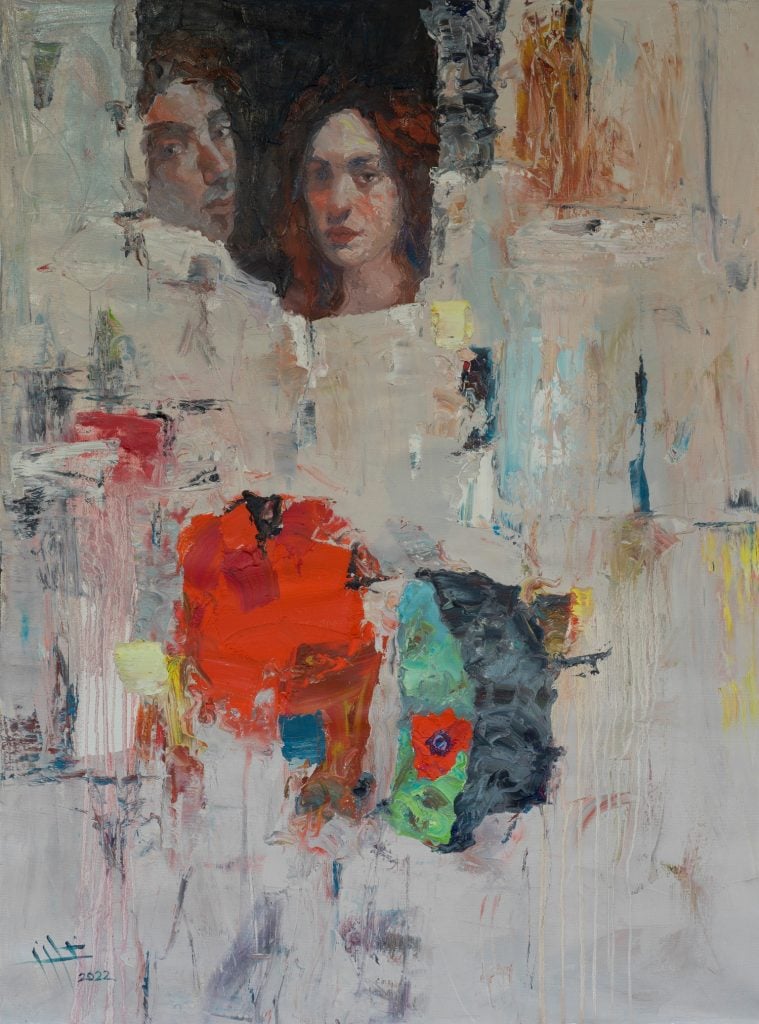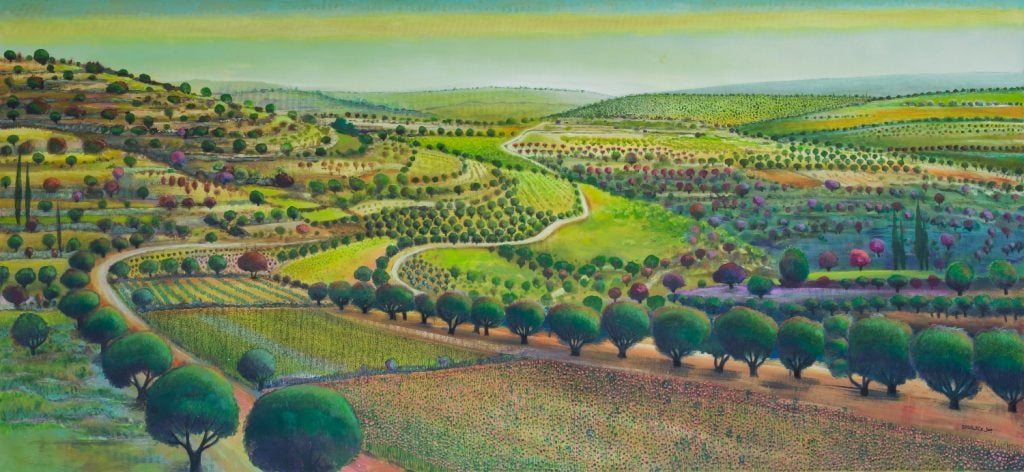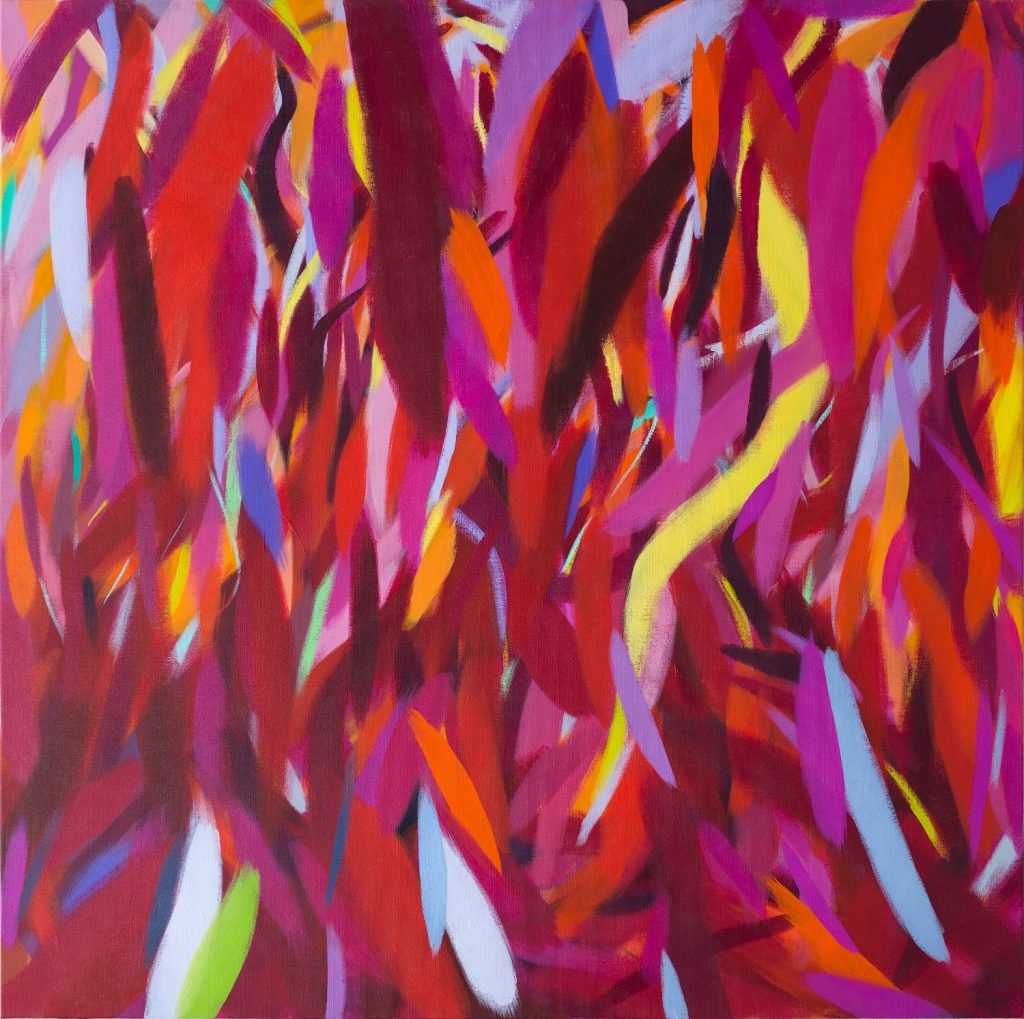On View
A New Show in London Gives Palestinian Artists an Opportunity to ‘Tell Our Own Story’
Since the organizers' proposal for the Venice Biennale was rejected, an unofficial exhibition is in the works.

Since the organizers' proposal for the Venice Biennale was rejected, an unofficial exhibition is in the works.

Jo Lawson-Tancred

When the official collateral events for the forthcoming 60th Venice Biennale were announced last fall, the Palestine Museum U.S. learned that its proposal for an exhibition titled “Foreigners in Their Homeland” had not made the cut. The show, which will spotlight contemporary Palestinian art, will now go ahead as an unofficial collateral event at Venice’s Palazzo Mora instead, opening April 20.
Additionally, a previous iteration of the exhibition concept titled “From Palestine with Art,” which was originally presented as an official collateral event at the 59th Venice Biennale in 2022, is currently being restaged at P21 Gallery in London until March 2.
On view in the London exhibition are two embroidered thobes, a traditional form of dress in Palestine, displayed like pieces of tapestry art. An expansive landscape by the painter Nabil Anani who lives in the West Bank depicts Palestine as it would have looked a century ago, filled with luscious rolling green fields lined with olive and cypress trees.
A montage of portraits by the artist Jacqueline Bejani spotlights Palestinian intellectuals, artists, and writers, like Mahmoud Dawish and Susan Abulhawa, as well as lesser-known pioneers and creative figures. The paintings are streaked with shades of black, green, and red.
“I use the colors of the Palestinian flag, because very often we’re not allowed to show those,” said Bejani. “All of them together become the flag. It’s our cultural heritage. It’s our identity.”

Ghassan Abu Laban, Jidar, OOC (2022). Photo courtesy of Palestine Museum U.S.
Other works, like Ghassan Abu Laban’s Jidar, OOC (2022) refer somewhat obliquely to life under occupation. This almost abstract canvas represents the separation barrier in the West Bank, but one in which an imaginary hole has been torn allowing people to peer through.
A 2021 painting on the universal theme of migration by Gazan artist Mohammed Alhaj has become particularly poignant since Alhaj himself recently had to move his family from the north of Gaza in search of safety. They are currently living in a tent near the southern city of Rafah.
The London show also includes a documentary-style film by the Gazan journalist Roshdi Sarraj, who was killed in a targeted airstrike in October. Capturing air strikes and buildings reduced to rubble, this particularly distressing work will not be included in the exhibition planned for Venice.
While the 60th Venice Biennale’s curator Adriano Pedrosa did not select “Foreigners in the Homeland” as an official collateral event at this year’s Venice Biennale, he did choose a project by Artists and Allies of Hebron, an organization founded by Palestinian activist Issa Amro and Berlin-based South African photographer Adam Broomberg. They will present “Anchor in the Landscape,” an exhibition of photographs taken by Broomberg and Rafael Gonzalez of Palestinian olive trees, which have long been threatened by Israeli occupation.

Nabil Anani, In Pursuit of Utopia (2020). Photo courtesy of Nabil Anani.
The Palestine Museum U.S.’s founding director Faisal Saleh questioned why the artists behind the photography series are not of Palestinian origin.
“This is the dilemma that we as Palestinians are facing,” he said. “Western institutions don’t trust us to tell our own story. It’s a horrible feeling that they always have to find someone whose not Palestinian to lead the project. That’s the message.”
“We may not be the best artists in the world, or the best curators,” he added. “But how do you present 56 years of occupation? We have a story to tell and our story is compelling.”
As Pedrosa wrote in his curatorial statement for “Foreigners Everywhere,” the main exhibition at this year’s 60th Venice Biennale, the theme is intended to spotlight Indigenous artists who are “frequently treated as a foreigner in their own land.”
“Our exhibition is 23 Palestinian artists representing their environment and experiences living under occupation,” said Saleh. “What we presented was exactly what Pedrosa said he was looking for.”
The Biennale noted that of the 72 submissions it received for its program of official collateral events, 42 were not selected. According to its official procedure for the selection process, the curator is never asked for the reason behind their choices.
“Of course La Biennale is happy if those projects not selected take place in Venice,” a spokesperson for the Biennale told Artnet News.

Samia Halaby, Venetian Red (2021). Photo courtesy of Samia Halaby.
Another of the paintings on show at P21 is by the well-established Palestinian-American abstract painter and scholar Samia Halaby. She made headlines last fall when Indiana University’s Eskenazi Museum of Art abruptly cancelled her first U.S. retrospective, which had been in the works for three years.
The decision was made by the museum’s director David Brenneman shortly after Indiana representative Jim Banks told the university it could lose federal funding if any antisemitism was allowed on campus. Halaby has, however, been named as one of the artists to be included in Pedrosa’s main exhibition “Foreigners Everywhere.”
The Palestine Museum U.S. opened in Woodbridge, Connecticut in 2018 as the first museum dedicated to Palestinian history and culture in the Americas.
“From Palestine with Art,” is on view at P21 Gallery, 21-27 Chalton Street, Somers Town, London, February 1–March 2, 2024.
“Foreigners in Their Homeland” is on view at Palazzo Mora, Cannaregio, 2978, 30123, Venice, April 20–November 24, 2024.